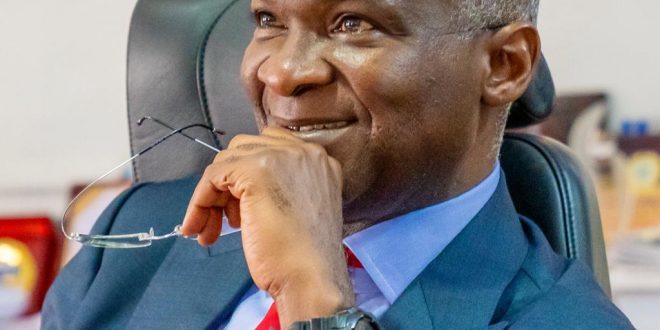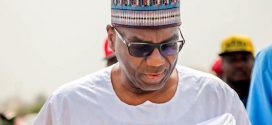On the 26th August 2022, one of the Presidential candidates in the last election made statements to this effect: “Infrastructure cannot grow the economy…” There is “…too much focus on Infrastructure, the economy is suffering…”
I am pleased to tell you that the person who made the statement did not win the election. Therefore, as far as policy goes there is unlikely to be a conscious or deliberate disinvestment policy about the provision of infrastructure.
In other words, the construction industry should remain optimistic, but nevertheless vigilant about those kinds of persons and their relationship with public office, because those thoughts border on the heretic in the realm of developmental economics.
I agree that the economy means different things to different people. People who have a micro view of the economy only see things in their limited scope. How much is the exchange rate for example and the impact of inflation on cost of living?
This is a permissible but very narrow view of the economy. Those who are able to see a broader view will see that it is the lack of critical infrastructure like a petroleum refinery that causes an oil producing country to import petroleum products.
This importation, caused by a lack of infrastructure is estimated to account for about 30% of our forex demand. If there is a reduced demand of forex by up to 30% for petroleum products only, what about for fertiliser and petrochemicals aggregating by guesswork only to 10%.
If this demand drops, clearly economic common sense suggests that the Naira will firm up.
If petroleum products are locally made, some cost reductions such as shipping, insurance and port charges will be realised and for those who have a broader view of the economy, they will understand cost-push inflation reduction and its positive impact on cost of living.
The same is true of gas pipelines, as it is true of Sea and Airports, roads and bridges, and telecommunications infrastructure to deliver broadband and related infrastructure in support of economic growth and jobs.
Simply put, every economy that seeks expansion, efficiency, and productivity must invest in the commensurate infrastructure in order to achieve it.
Nigeria is such a country, and as I have said before, we are living largely on infrastructure built in the 70s and 80s because we spent much of the 90s in the agitation to bring back democratic Governance.
We have a lot of building and construction to undertake and this much is evident in the latest National Infrastructure Master Plan. (2020 – 2043 estimated about $2.3 Trillion over 21 years, that is about $110 billion per annum).
Therefore in my opinion, the outlook of the construction industry in Nigeria over the next 5 to 10 years and beyond remains highly positive as can be deduced from the Government master plan.
Of course, there will be choices to be made, dictated by the limitation of resources, and as Minister of Works and Housing in the last administration I had to make similar choices.
We set priorities for critical areas of our economy and the choices of roads we committed to reconstruct or rehabilitate.
One of our priorities was roads leading to and out of Airports and Seaports, which explains the reconstruction of the Apapa-Oshodi-Oworonshoki Road; and the Ikom Bridge in Cross Rivers; roads leading to international borders, such as the Kano-Kongolam Highway, the Lagos-Badagry Expressway and the Nigeria-Cameroon bridge connecting Ekok in Cameroun to Mfum in Cross Rivers State.
Bridges were a priority which informed the new River Niger Bridge and the Loko-Oweto Bridge across the two main rivers in Nigeria. The former across River Niger reduced connection times between Asaba and Onitsha that sometimes took a whole day to no more than 30 minutes, while the latter across River Benue reduced connectivity time between the East of Nigeria and the FCT by four hours.
Roads that connected critical agro-producing areas were also a priority, such as Sokoto-Tambuwal-Jega Road, Akwanga-Keffi Makurdi and Kano-Maiduguri roads that carried heavy goods vehicles and also those used in distributing petroleum products were a priority which explains Ilorin-Jebba, Lagos-Ibadan, Sagamu-Benin, Suleja-Minna.
While these examples reflect the choices that limited resources imposed upon us, it is instructive to mention that while some of these projects were completed, others are still works in progress.
I also recall that we chose roads within tertiary educational institutions and executed 2 to 3 kilometres internal roads in 77 institutions and completed 46 (figure correct as of March 2022).
The point here is to highlight the fact that education requires infrastructure and interestingly so does healthcare as we all know, but need to remind ourselves; because, one of those institutions was the University College Hospital, Ibadan.
Therefore, we can see that roads were not just Roads. They were economic roads to reduce travel and connecting time, or to distribute petroleum products and heavy goods and to support transport of Agricultural products and boost education and healthcare.
But what speaks more loudly to the continuing relevance of construction industry and its positive outlook in Nigeria in the foreseeable future are the areas of economic activity still crying out for infrastructure to drive them.
Let me address three of them quickly, namely tourism, entertainment and sports; starting with the last two.
It must be obvious to those who pay attention that, globally and locally, occupations and professions are changing from the traditional professions of lawyers, doctors, engineers etc although they remain relevant and necessary.
However, what used to be mere vocations and hobbies have become professions in sports and entertainment; and never in the history of mankind are natural talent and skills being rewarded like today, and I think it is only just beginning.
Our artists and singers are selling out the largest performance arenas abroad and looking for similar facilities to perform at home.
Sports is perhaps the largest profession and employer of young people in the world today and the answer to youthful unemployment is hiding in plain sight.
Similarly, tourism in Nigeria is waiting to be unleashed with a need for critical support infrastructure like rail, roads, bridges and airports that connects to our tourism assets; and other support infrastructure like hotels and accommodation that need to be built.
The point ladies and gentlemen, is that these are obvious areas of needs for our economy, and what the economy needs determines what is built.
I will now quickly address the impact of construction on other aspects and areas of our economy.
It seems to me that those who operate in the construction industry have not shared the economic possibilities in the industry and those of connecting industries with the larger society.
I do not know how many urban dwellers appreciate how big the mining and quarrying industry is.
The assets are located in suburban and rural areas but the impact is felt more in the urban centres, in forms of skyscrapers, luxury flats, highways and bridges built from crushed stones, marble, granite, stone dust and even laterite that has to be mined, loaded and transported.
Therefore, very few sectors of the economy such as shipping and petroleum drive the haulage and transport sector of the economy like construction.
From records of economic impact we kept in the Ministry of Works and Housing, I can report 1,704,300 truck trips of haulage of bitumen, diesel, laterite, sand, cement and reinforcement.
The average minimum cost of a 30 Ton Truck was N200,000 per trip. So, from one Ministry alone at the federal level, excluding 36 states and FCT, this represents a N340.8 Billion haulage economy over 8 years or N42.6 billion per annum.
This is the employment of transport companies their employees and drivers, enabled by construction.
Drivers were then paid averagely N5,000 – N7,500 per day.
I can report 383,431 people directly employed in constructing and rehabilitating 9,290 kilometres of roads and bridges, installing 2,270,319 linear metres of lane marking and installing 254,690 road signs.
I can report 1,262 building contractors employed in the housing sector to construct 6,000 units of housing with fittings and accessories at 46 sites across 35 states.
This is just a high-level summary of how extensively construction impacts the economy.
Apart from evacuating the quarry, all the trucks involved in haulage use fuel, lubricants and spares; this drives demand for other services provided largely by micro small, medium enterprises that are the heartbeat of every economy.
It is these businesses that put food on the tables of families, pays rent, school fees and medical bills and so much more.
As I often say, construction companies don’t keep building materials, they only keep minimum basic equipment. So, when they are contracted and financed, they become the easiest way by which wealth is legitimately distributed in an economy.
The last time I checked before I left office, the least paid worker on a construction site for labour only with limited or no skills, will get paid about 3,000 naira daily. (This amounts to double the then monthly minimum wage of N30,000 per month on a 5-day working week).
A project like the Second Niger Bridge consumed about 26,900,000 litres of diesel, 80,000 tonnes of cement, 660,000 tonnes of aggregates which the contractor had to buy from suppliers and small and medium businesses.
At the time when diesel was N230 per litre, cement was N51,000 a ton and aggregates were priced at N3,600 per ton, the Second Niger bridge alone account for diesel business of N30.935 Billion, cement business of N4.080 Billion; and Aggregate business of N2.376 Billion.
At halfway during the reconstruction of a Apapa-Oworonshoki Expressway, over 5,000 trucks of laterite sourced from Ogun state have been supplied to the site in Lagos.
Section One of the Lagos – Ibadan Expressway covering 44 Kilometres (from Lagos to Sagamu) constructed by JB, our hosts, employed 29 subcontractors and 161 suppliers.
In the process, the contractor paid N 39.8 billion to suppliers, and N10.6 billion to its own employees while maintaining 75 permanent jobs at its quarry who did about 30 truck trips per day.
I have only opened the door of construction and its multifaceted impact on the economy. There is a lot in details that time will not permit me to explore.
At a later date I am planning an intervention about what it takes to build a road or a bridge.
But since the Marshall Plan to rebuild Europe after the Second World War, economists have paid attention to connect infrastructure, and construction to GDP growth and the well-being of the economy.
When young people are risking life and limb to cross deserts and oceans in desperate migration attempts, they do so in pursuit of a better life which often is indicated by quality of infrastructure.
But it is not only economists who have got the message about infrastructure, construction and the economy, many sensible politicians get it and are doing something about it.
That is why it is hard to read through any Mayor, Governor, Prime Minister or President’s inaugural speech without a decent mention of infrastructure.
This was the big commitment of the administration I served under President Buhari, that was followed with the Executive Order Number 11 of 6th of April 2022 for infrastructure maintenance to keep the assets in good operational working order, post construction and to maintain sustainable jobs in the process.
Funding the commitment to build infrastructure has always been a challenge in the midst of competing demands.
Policy, more than budget has been the biggest source of capital mobilization for infrastructure in recent times.
This explains initiatives such as the Sukuk which has helped to fund the construction of critical roads and bridges.
Policy initiatives such as the Tax Credit Scheme initiated by Executive Order No 7 of 2019 have over time started to yield results.
Companies like the NLNG, Dangote Group, MTN, GZ Industries, BUA Group and NNPC Ltd are embracing it to mobilize capital for construction.
In 2021 NNPC Ltd in collaboration with FIRS committed to invest N621.237 Billion to construct 21 Roads spanning 1, 804 Kilometres.
In 2022 NNPC Ltd again committed to N1.9 Trillion for road infrastructure.
These roads will take time to build and with the retention of the Tax Credit Scheme policy, there is an assurance of funding for construction companies.
Management of funds recovered from abroad and dividend income from NLNG were domiciled with the Nigeria Sovereign Investment Authority (NSIA) and dedicated to infrastructure, such as the Second Niger Bridge, Lagos-Ibadan Expressway and the Abuja-Kaduna-Zaria -Kano Highway.
Through the Highway Development and Management Initiative (HDMI) we signed concession agreements on 9 highways covering 1,423.5 Km to mobilize N900 Billion for reconstruction and maintenance.
President Bola Tinubu clearly also connects infrastructure to the economy as you will see in his inaugural speech when he said:
“We shall remodel our economy to bring about growth and development through job creation, food security and an end of extreme poverty.
Our government also shall work with the National Assembly to fashion an omnibus Jobs and Prosperity bill. This bill will give our administration the policy space to embark on labour-intensive infrastructural improvements, encourage light industry and provide improved social services for the poor, elderly and vulnerable.
We shall continue the efforts of the Buhari administration on infrastructure. Progress toward national networks of roads, rail and ports shall get priority attention.”
He has followed his words with action by announcing the establishment of an Infrastructure Fund which must be good news for the construction industry.
This said, I can conclude with compelling reason, that the outlook for the construction industry in Nigeria over the next 5 to 10 years is not just one of hope, but rather an outlook of positive and legitimate expectation.
 Hottestgistnaija.com
Hottestgistnaija.com





